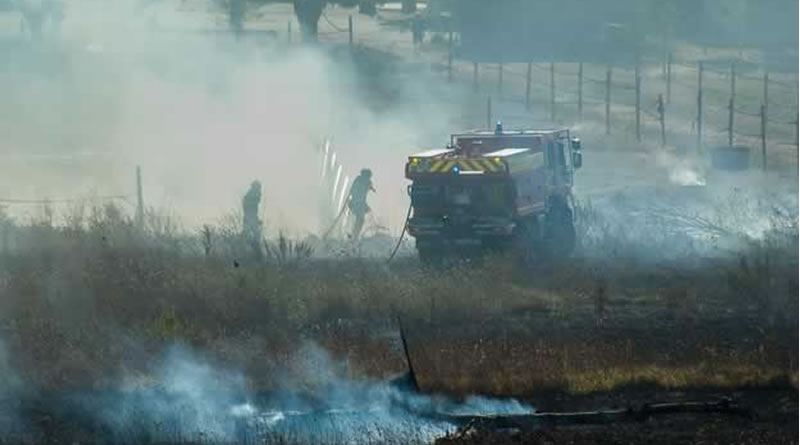Preparing for Fire Season and Grass Fires in Australia
Get ready for fire season—whether you’re on the fireground or just at home. This guide covers practical, step-by-step advice for all Australians: families, renters, landholders, and emergency crews. Stay calm, feel supported, and know exactly what to do—before, during, and after a fire.
Focused keyword: fire season preparation
Picture this: it’s the middle of summer. The wind is up, the sky looks hazy, and you catch the smell of smoke somewhere nearby. Maybe you’re with family at home, checking alerts. Or maybe you’re on shift with your crew, radios crackling and tension rising.
For most of us, the idea of fire season brings a mix of worry and uncertainty. Will we be ready? What will we do if a grass fire breaks out, or an emergency warning comes through?
This guide is for everyone—firefighters, volunteers, renters, families, business owners, and anyone who wants to feel safer and more prepared. We’ll walk through how to prepare, what to pack, what to do if a fire is near, and how to look after yourself and your community.
If you’ve ever felt overwhelmed by fire safety, or unsure what the “right” steps are, you’re not alone. Let’s break it down, together.
Tip: One thing I always recommend—whether you’re on a crew or packing an emergency kit for your family—is to include a high-quality first aid kit. Check out the Campboss Modular First Aid Kit for emergencies—it’s flexible, easy to carry, and has all the essentials you’d want in a rush.
How to Prepare for Fire Season
At Home or Work
- Walk around your property and spot any fire risks—long grass, dry leaves, firewood piles, or old junk near the house.
- Trim grass and clear leaves from gutters, roofs, decks, and around sheds.
- Move flammable items (like outdoor furniture or mulch) away from your main buildings.
- Check that hoses reach all around your home or site and are ready to go.
- Review your home or business insurance and keep it up to date.
- Plan for pets, elderly, young kids, and anyone with mobility or medical needs.
On the Fireground or with a Crew
- Double-check all gear: PPE, boots, gloves, face shields, comms, and first aid kits.
- Ensure water, food, sunscreen, and hydration packs are packed—grass fires move fast and heat is exhausting.
- Review local maps, fire danger ratings, and predicted weather for your shift or deployment.
- Run a safety brief with your crew before heading out. Agree on comms and escape plans.
- Label your gear and keep spare clothing, torch, and batteries handy—nights can get cold, smoky, and unpredictable.
Planning Ahead: Why and How
Planning isn’t just for big landowners or emergency services. Every home, flat, shop, farm, or caravan needs a basic fire plan. When things get hectic, a clear plan lets you act quickly and safely—without panic.
Here’s what works for most people:
Families & Households
- Pick a meeting spot outside your home or property—everyone needs to know it.
- Share your plan with neighbours, housemates, and nearby friends or family.
- Keep important documents, cash, ID, and phone chargers in a grab-bag (in a safe spot near the exit).
- Have a list of what you’d take if you had 10 minutes to leave.
- Don’t forget pets—have leads, crates, and food ready.
Crews & Teams
- Review your turnout, staging, and evacuation plan for every deployment.
- Assign roles: crew leader, radio operator, lookout, and first aid.
- Check your comms and backup gear before you head out.
- Always have a “plan B”—roads can close, fire can change fast, and mobile coverage may drop.
- Agree on how to check in with your brigade, station, or command.
What to Pack: Emergency Grab Bags & Fire Crew Gear
Packing in advance saves precious time—whether you’re dashing out of the house or heading off for a 12-hour shift.
For the public, a simple emergency kit is the difference between chaos and calm. For firefighters and crew, the right gear means safety, comfort, and staying effective all day or night.
Emergency Grab Bag for Households
- Medications, scripts, basic first aid kit
- Chargers, spare batteries, power bank
- Drinking water, snacks, torch, radio
- Copies of ID, important docs, cash
- Face masks (for smoke), hand sanitiser, wet wipes
- Pet leads, food, and comfort items
- Spare clothing, sturdy shoes, hat, sunscreen
Crew Kit for Firefighters & Volunteers
- Full PPE (clean, fitted, and undamaged)
- Spare socks, gloves, underclothes, hat
- Personal first aid kit, burn gel, eye drops
- Head torch, spare batteries, pocket knife
- Energy snacks, 2L+ water, electrolyte tabs
- Hand sanitiser, wipes, sunscreen, lip balm
- Notebook, pen, laminated local map
Responding to Fire: Calm Steps in Chaos
When a warning comes through, or you spot smoke or flames, time speeds up. The biggest enemy is panic.
Whether you’re a family at home or a crew in the field, these steps work:
For Households & Businesses
- Check official alerts and local fire warnings—don’t rely on social media or hearsay.
- Let neighbours, friends, or your emergency contact know what’s happening.
- Grab your emergency bag and anyone who needs help—kids, pets, elderly.
- If it’s time to leave, go early—roads can close fast. Don’t wait for the last minute.
- If you stay, shelter inside a solid building, close windows/doors, and monitor updates closely.
For Firefighters & Responders
- Check in with your team—run a quick safety brief.
- Keep radio discipline—listen, share updates, avoid unnecessary chatter.
- Watch for wind shifts and grass fire spread—grass fires move faster than you think.
- Stay hydrated, rotate tasks, and watch for fatigue.
- Keep track of your escape routes—never let fire cut off your exit.
After the Fire: Recovery & Support
Fire doesn’t end when the flames are out. Whether you’re a household picking up the pieces or a fire crew wrapping up a long shift, recovery is just as important as preparation.
For families and businesses, check your home and property for hidden dangers—smouldering debris, unstable structures, and ash pits can linger. Don’t enter burned areas until emergency services say it’s safe.
For crews, support each other. Debrief honestly. Look after your gear, yourself, and your mates. Long fire seasons are tough mentally as well as physically—talk about what worked, what didn’t, and check in with anyone who seems flat or withdrawn.
Common Mistakes: What Trips People Up
Waiting Too Long to Leave
Hoping things will “blow over” is a natural reaction. But fire moves faster than you think—especially grass fires on windy days. Early action is always safer.
Relying on Social Media Rumours
Always check official alerts and government warning sites. Rumours and unofficial posts can be wrong or out of date, and waste precious time.
Skipping Gear Checks or Training
Both at home and on the fireground, people skip practice. Run through your plan, check your kit, and make sure everyone knows their role.
Want more detailed guides? See our Bushfire Evacuation Planning Guide and Emergency Kit Checklist for step-by-step support.
Frequently Asked Questions
Do I really need a fire plan if I live in the suburbs?
Yes. Grass fires and ember attacks can reach built-up areas. Even house fires can spread quickly. A plan gives you time to act calmly, wherever you live.
What if someone in my home has a disability or special need?
Make your plan together—include extra time, clear steps, and any equipment needed. Let neighbours know who might need help in an emergency, and keep key contacts on your fridge or phone.
How fast do grass fires move?
On hot, windy days, grass fires can move faster than a running person—sometimes over 20km/h. Never underestimate them. Early action is the safest option.
What’s the best way to stay updated during fire season?
Check your local fire authority or emergency app for real-time alerts. Set up multiple ways to receive warnings (phone, radio, official websites), and don’t rely on a single source.
For new volunteers—how do I stay safe on my first fireground?
Always listen to your crew leader, ask questions if unsure, and never take risks alone. Safety gear on, comms checked, and stick with your team. Experienced crew will always help if you speak up early.
Next Steps
Take five minutes today to talk over a plan with your family, housemates, or crew.
Print out or save your key checklists, double-check your emergency kit, and share this guide with someone who needs it.
The best time to prepare is now—before the season gets busy.
This article was created using practical emergency preparedness and firefighting advice and reviewed for clarity. It is intended as general public information for Australian households, communities, and emergency service teams.



